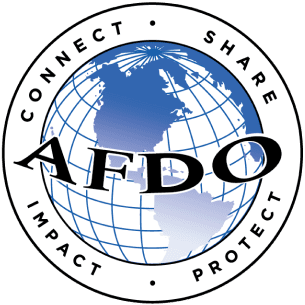Concerning: Liquid Nitrogen and Dry Ice used as food and beverage ingredients (Revised and Resubmitted)
Whereas, the culinary use of liquid nitrogen (LN2) and dry ice (solid form CO2) are becoming increasingly popular with molecular gastronomy and the use as ingredients in food products, and
Whereas, public health and safety risks may be associated with non-food grade liquid nitrogen (LN2) and dry ice (solid form CO2) used as ingredients in food products, and
Whereas, according to 21 CFR Part 184, Sec. 184.1540 Nitrogen, the use of liquid nitrogen is not specifically mentioned as a generally recognized as safe (GRAS) direct human food ingredient, and Whereas, liquid nitrogen is a colorless clear cryogenic fluid with a density of 0.807 g/ml at its boiling point (−195.79 °C (77 K; −320 °F)) that can cause rapid freezing on contact with living tissue, and
Whereas, dry ice sublimes at −78.5 °C (−109.3 °F) and this extreme cold makes the solid dangerous to handle without protection due to burns caused by freezing (frostbite) and the outgassing from it can cause hypercapnia (abnormally elevated carbon dioxide levels in the blood) due to buildup in confined locations, and
Whereas, liquid nitrogen has been used in food preparation to flash freeze food, make ice cream, process dry herbs and spices, rapidly chill beverages, as a cosmetic novelty giving a smoky, bubbling “cauldron effect” to cocktails and drinks, and
Whereas, dry ice has been used in food preparation to flash freeze food, make ice cream, carbonate food and beverages, as a cosmetic novelty giving a smoky, bubbling “cauldron effect” to cocktails drinks, and
Whereas, the safety of food products can be compromised by these ingredients if sublimation has not fully completed and they are readily consumed, and
Whereas, the improper handling and use of these ingredients in food products may results in adverse health conditions, physical abnormalities and possibly death, and
Whereas, AFDO recognizes the importance of uniformly providing the best public health and consumer protection in the most expeditious and cost effective manner, and
Whereas, the extreme cold temperature can cause damage to human tissue, and the displacement of oxygen by nitrogen can cause asphyxiation, and
Whereas, Liquid nitrogen is used in several foods and drinks to quickly freeze them or for the vapors it produces, and its consumption poses several dangers to humans as illustrated in the following episodes:
In 2012, a young woman in England had her stomach removed after ingesting a cocktail made with liquid nitrogen which further resulted in severe internal damage
At a shop in Singapore in 2016, a woman was burned when the dessert stuck to her gums.
In August 2017, a South Korean boy was hospitalized and required surgery when the liquid left at the bottom of the Dragon’s Breath cup caused a 5 centimeter hole in his stomach.
In October 2017, two children at the Pensacola Interstate Fair in Florida were injured while handling or consuming Dragon’s Breath. A 14-year-old suffered a burn on her thumb from contact with the frozen dessert. Another child suffered second degree burns on the roof of her mouth. Following complaints, the fair’s general manager announced the vendor would not be allowed to sell Dragon’s Breath at the next year’s event. (Dragon’s Breath is a frozen dessert made from cereal dipped in liquid nitrogen. When placed in the eater’s mouth, it produces vapors which comes out of the nose and mouth, giving the dessert its name), and
Whereas, the history of food and drug law illustrates the critical need for federal oversight through technical assistance to the states, guidance to manufacturers, information to consumers, and, where necessary, national legislation, therefore be it
Resolved, that AFDO ask FDA to examine current industry use of liquid Nitrogen and dry ice in retail to determine if they are compatible with the requirements of FDA Model Food Code and, if use is not prohibited, identify appropriate controls to ensure consumer safety, and
Be it further Resolved, that AFDO advises FDA of the need for federal leadership on the matter of liquid nitrogen and dry ice used as food and beverage ingredients and for providing guidance and technical assistance to the states on appropriate regulatory intervention in order to avoid the creation of a patchwork of state regulations covering this issue.

